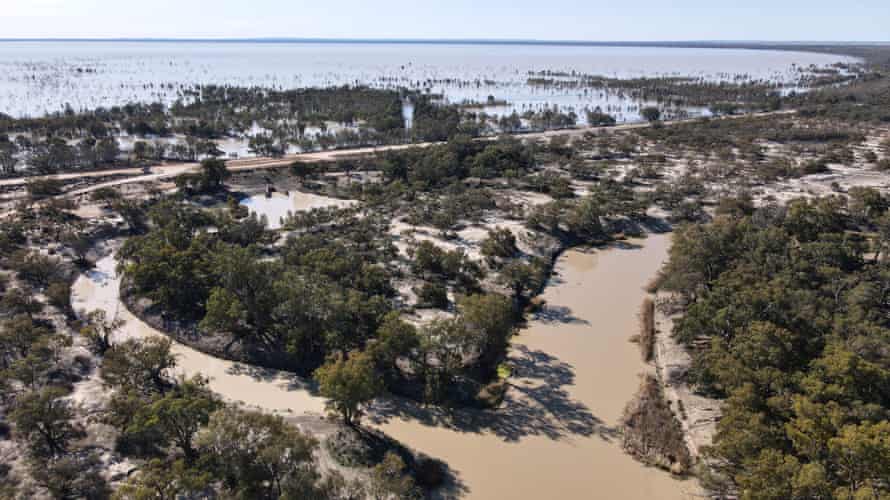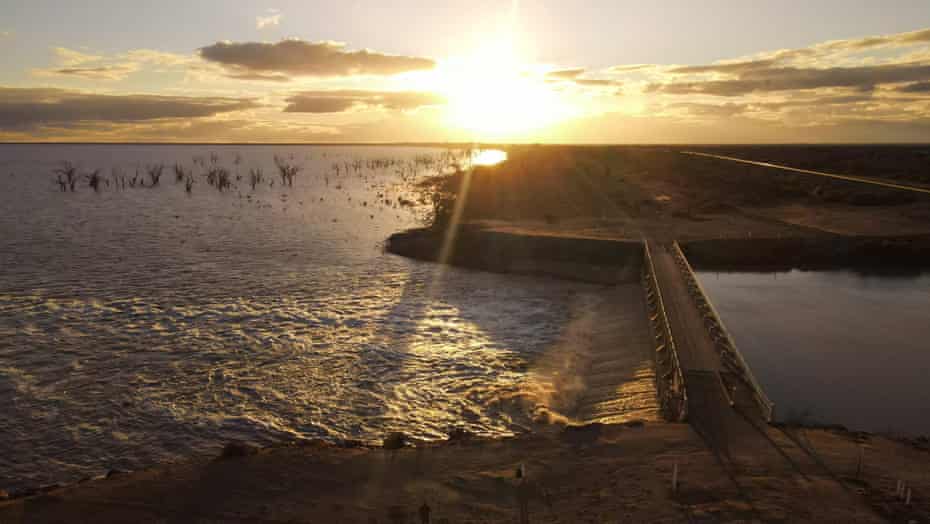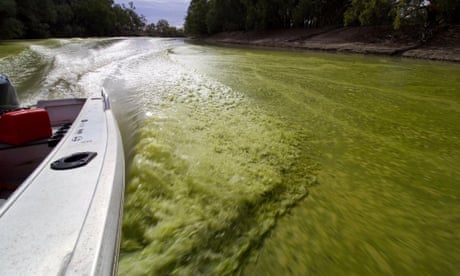Extract from The Guardian
Aquatic plants and the hatching of millions of crustaceans will draw water birds including pink-eared ducks, straw-necked ibis and yellow-billed spoonbills.

Last modified on Mon 20 Sep 2021 07.18 AEST
Ecologists are expecting an explosion in wildlife at Menindee Lakes as invertebrates, fish and bird species return to the vast inland waterway after favourably wet conditions.
Prof Richard Kingsford, the director of the Centre for Ecosystem Science at the University of NSW, has worked on the monitoring of Menindee Lakes since 1983.
Kingsford said the effect on the ecosystem was gradual because “as it floods, it takes a while for the food web to build up”.
“That first flush brings down small terrestrial animals like spiders and centipedes which is good food for water birds like straw-necked ibis, yellow-billed spoonbills, and red-necked avocets.”
However the “real engine room” is what happens after, Kingsford said, as the millions of tiny crustacean eggs at the bottom of the lakes hatch when the water arrives and are fed on by species such as pink-eared ducks.
“Aquatic plants will also germinate and come out and that’s what drives the water birds.”

Water pours into Menindee Lake from the open weir. Photograph: Michael Minns
In the coming months Kingsford said the native fish populations will start building in number as they suddenly have a huge expanse of water to breed in, instead of just a river corridor.
“Once you have the fish breeding, fish-eating birds like cormorants, pelicans, black swans and Eurasian coots know ‘it’s on at Menindee’ and they can come from anywhere.”
Kingsford said an influx of migratory wader species such as the sharp-tailed sandpiper , who escape the northern hemisphere winter by coming to Australia and might normally bypass Menindee Lakes, will also drop in.
Tony Webber from Water NSW said the Barwon and Darling Rivers upstream of the Menindee Lakes were not regulated with dams, so the replenishment of the lakes was naturally occurring on a “boom and bust” cycle.
“During the drought for the most part the entire river was dry. However, now there is flow all the way from the Queensland border to the Victorian border, and that’s been the case largely consistently since March this year,” Webber said.
We anticipate inflows into the lake system will continue into mid-October, and that’s without follow up rain events in the catchment,” he said.
According to Kingsford, the Menindee Lakes used to flood more often, but increasingly there are “longer drier periods and shorter floods, that’s one of the big challenges”.
Kingsford said the long-term decline is due to a lot of the irrigation development upstream.
When it comes to government programs to change the structure and configuration of lakes such as Menindee to save water, Kingsford said “generally governments haven’t thought hard enough about ecosystems and what they need in that system”.


No comments:
Post a Comment